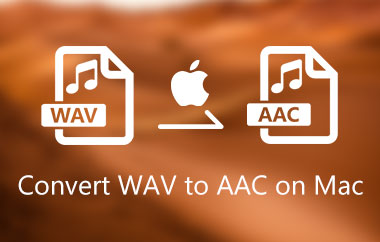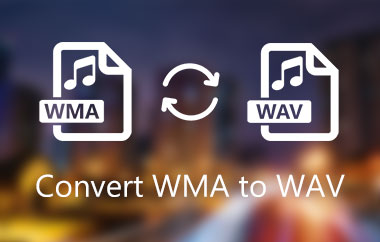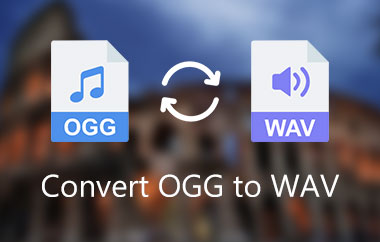WAV (Waveform Audio File Format) is a widespread audio file format for storing high-quality audio data on computers. WAV files are uncompressed, meaning they do not lose original audio data during encoding. They are known for their high fidelity and accurate reproduction of sound. WAV files are compatible and run consistently with most media players and audio editors, making them versatile for professional audio production and distribution. They can store audio data in various formats, including PCM, ADPCM, and MP3. Although they are more extensive compared to compressed audio formats, they are still widely used in the music industry, film, and video game production due to their high quality. Check the reviewed apps in this post if you are looking for the best WAV editor to enhance your audio files.
Part 1. Top 5 WAV Editors for Windows and Mac
1. AVAide Video Converter
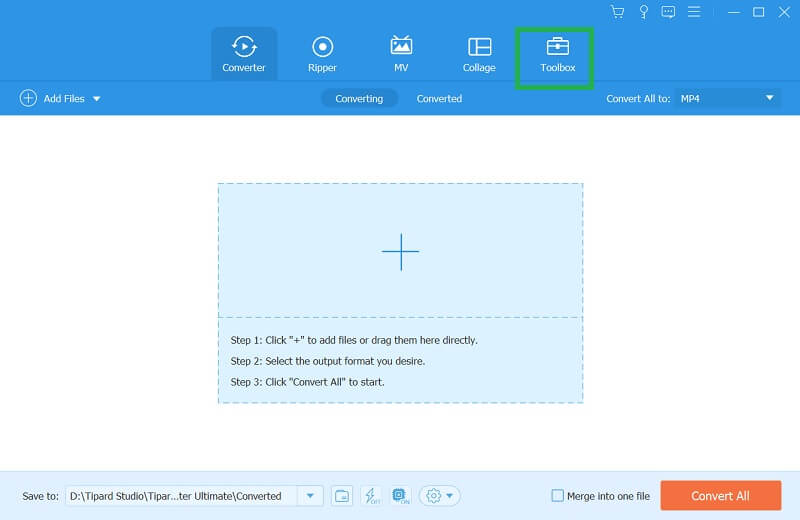
AVAide Video Converter is a comprehensive media editor that enables users to enhance and modify WAV files. This tool's promising conversion speed makes it relevant to other WAV editors. The tool promises and assures users of 30x conversion speed compared to regular editors and solutions. This tool can also trim, split, merge, enhance, and compress audio clips for better output quality. Moreover, this WAV editor can quickly rip your WAV files with no further quality loss.
- Pros
- AVAIde Video Converter uses advanced encoding algorithms to convert videos quickly without sacrificing quality.
- The software allows audio enthusiasts to convert multiple videos simultaneously, saving time and effort.
- Users can adjust the output resolution, bitrate, and other parameters to customize the video output to their preferences.
- Cons
- The app is not available on mobile phones or tablets.
2. Audacity
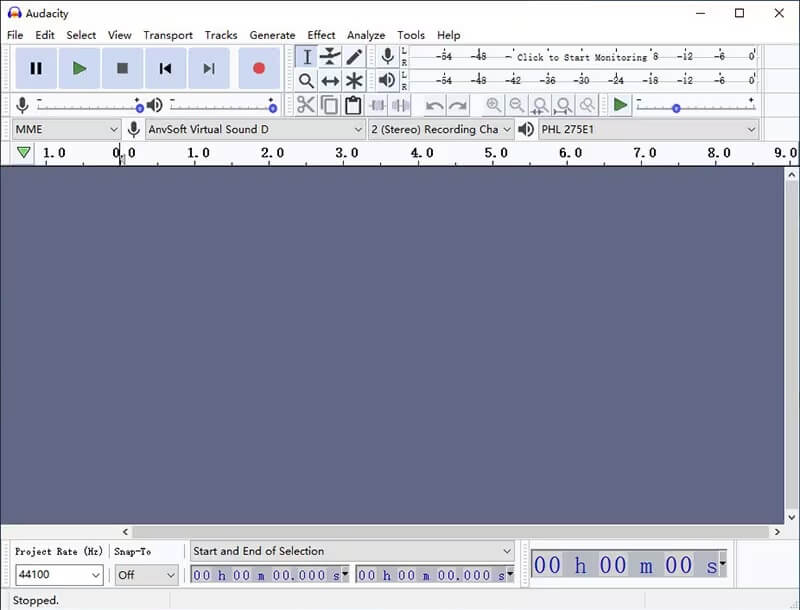
Audacity is an open-source and unrestrained audio editing software for Windows, Mac, and Linux. This feature means that users can download, use, and modify the software without paying anything. Audacity has a user-friendly interface that is easy to navigate. The software has a range of features that are easy to use, even for beginners. It is a versatile tool that can be used for various audio editing tasks such as recording, editing, mixing, and mastering.
- Pros
- This audio editor supports various formats, including WAV, AIFF, MP3, and others. This makes editing and working with different types of audio files easy.
- Audacity has various advanced editing features that allow users to perform complex tasks such as noise reduction, equalization, and compression.
- Audacity also supports a range of plug-ins that can be utilized to insert additional features and functionality.
- Cons
- Audacity is a free and open-source software with limited support compared to paid software. This means users may not have access to dedicated technical support or regular updates.
- Audacity's performance may be slower compared to other paid audio editing software depending on the size and complexity of the audio files being edited.
3. Adobe Audition

Adobe Audition is a highly effective digital audio workstation suitable for professionals who need to manage audio files efficiently. It offers a thorough solution for mixing, editing, recording, and mastering audio. Its user-friendly facade and advanced features make it popular among podcasters, musicians, and audio engineers. Adobe Audition is designed to be easy to circumnavigate, with an intuitive interface that makes it accessible to beginners.
- Pros
- Adobe Audition has a wide range of advanced features, making it a versatile audio editing tool. These features include multitrack editing, spectral editing, and noise reduction.
- Adobe Audition integrates seamlessly with other Adobe apps, including Premiere Pro and After Effects. This feature makes it easy for video editors to work with audio files in their projects.
- Adobe Audition allows users and AI enthusiasts to customize their workspace according to their needs. This feature can help improve workflow and increase productivity.
- Cons
- Adobe Audition is a professional-grade software and comes with a high price tag. This drawback can make it difficult for beginners or hobbyists to justify the cost.
- Adobe Audition can be resource-intensive, especially when working with large audio files. Users may need a powerful computer to work with the software efficiently.
4. AudioMass
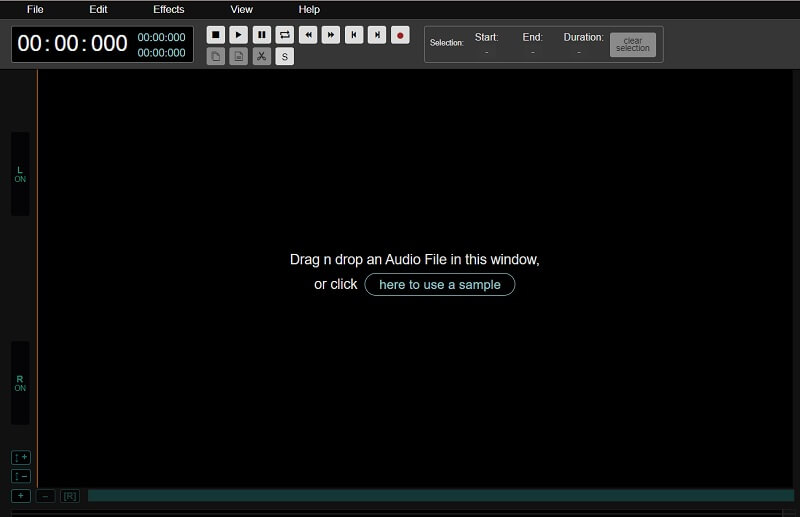
AudioMass is a free and web-based audio editor that has attained popularity due to its ease of usefulness and accessibility. It is a browser-based application, so there is no need to download any software. It is a convenient option for anyone who needs to edit audio files on the go or does not have access to dedicated audio editing software. AudioMass has a user-friendly interface. Even if you are not an experienced audio editor, you can easily navigate the platform and make basic edits to your WAV files. The platform delivers a wide range of editing tools, such as cut, copy, paste, fade in/out, amplify, and normalize, which are easy to use and can help you edit your audio files quickly and efficiently.
- Pros
- AudioMass supports various audio formats, including WAV, MP3, and OGG.
- It offers a variety of audio editing tools, such as cutting, trimming, fading, and normalizing.
- AudioMass allows you to edit multiple audio files simultaneously, saving a lot of time.
- The software is web-based, so you don't need to download or install anything.
- Cons
- The software may be unsuitable for professional audio editing tasks due to its limited features.
- AudioMass may not be as stable and reliable as some premium audio editing software.
5. Kapwing
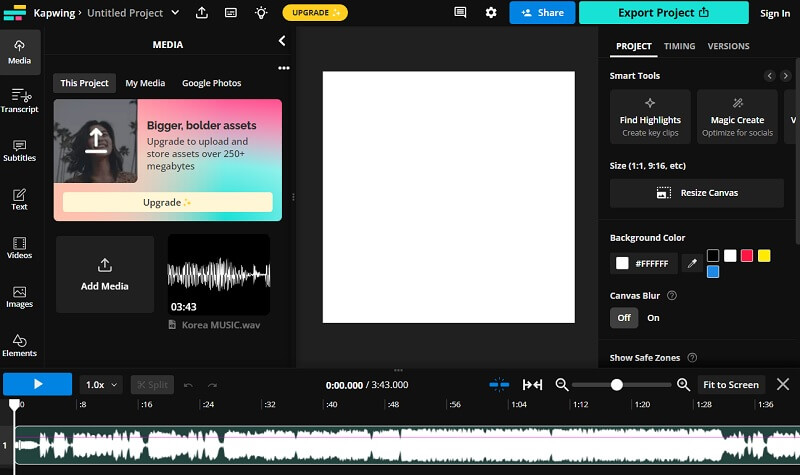
One popular online tool for editing WAV files is Kapwing. It is a free online video and image editor supporting audio editing. With Kapwing, you can upload your WAV file directly to the platform and edit it using the built-in audio editing tools. These tools include trimming, cutting, merging, and adjusting the audio volume. Kapwing also offers a range of audio effects and filters to apply to your WAV file. For example, you can add reverb, echo, distortion, or any other effect to create a unique sound. Once you have finished editing your WAV file in Kapwing, you can export it in various formats, including WAV, MP3, and more.
- Pros
- Kapwing offers a free plan that allows you to create and edit videos without paying a penny. You can access a scope of tools and features without any cost.
- Kapwing is a cloud-based platform, meaning you don't need to download any software. You can use the software from anywhere with an internet connection.
- Kapwing offers a scope of tools and elements, including video trimming and adding text, captions, subtitles, music, and more. You can use it for a variety of video editing tasks.
- Cons
- While Kapwing's free plan offers a range of tools and features, it comes with limitations. For example, you cannot download high-resolution videos or remove the Kapwing watermark without upgrading to a paid plan.
- Kapwing's processing times can be slow, especially when working with large video files. This drawback can be frustrating if you are working on a tight deadline.
Part 2. Best Way to Edit WAV Files
In this part, we are going to teach you how to edit WAV files using AVAide Video Converter for free and without hassle.
Step 1Download the App
Download the AVAide Video Converter by clicking the Try It Free button below. Run the file and completely install the app.

TRY IT FREE For Windows 7 or later
 Secure Download
Secure Download
TRY IT FREE For Mac OS X 10.13 or later
 Secure Download
Secure DownloadStep 2Add Audio File
Hit the + button to add the WAV file on the tool's interface. Browse your device's folder and select the WAV you need to edit. Click the Open button to add the file to the tool's system.
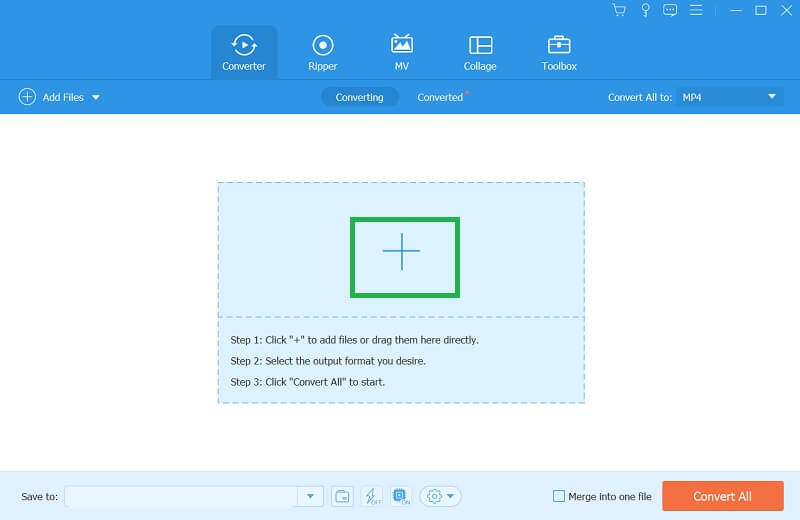
Step 3Enhance and Export WAV Files
Lastly, click the Scissor button to access the editing features of the AVAide Video Converter. A new page will prompt on your computer screen. You can split, merge, compress, add segments, remove segments, and more. Hit the Save button to retain the changes made to your WAV files. Export the file by clicking the Convert All button.
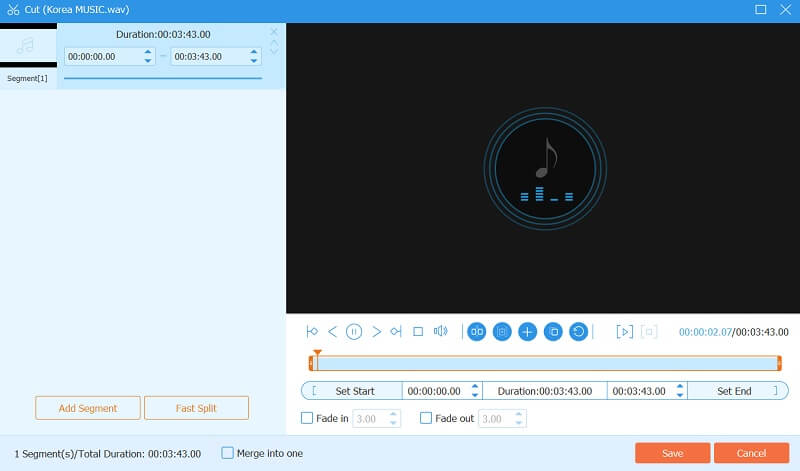
Part 3. FAQs About WAV Editors
What are some common uses for WAV files?
WAV files are commonly used for music production, sound design, and audio recording. They are also used in video editing, game development, and podcasting.
Is it possible to edit a WAV file without a WAV editor?
If you don't have a WAV editor, you can use some essential audio editing software, such as AVAide Video Converter, to perform simple editing tasks, such as trimming and cutting. However, for more advanced editing tasks, a WAV editor is recommended.
What is the difference between WAV and MP3 files?
The main difference between a WAV file and an MP3 file is the compression. WAV files are uncompressed, which means they are of higher quality but take up more storage space. MP3 files are compressed, which means they are lower quality but take up less storage space.
In conclusion, editing WAV files can be done with a reliable freeware WAV file editor. These tools can perform simple tasks, such as trimming and cutting. Also, they have advanced editing tasks, such as noise reduction, equalization, and mixing, that can be helpful to modify WAV files. The choice of solution relies on the complexity of the editing task and the user's expertise in audio editing. In any case, it is essential to clearly understand the editing process and work with high-quality audio files to achieve the best results.
Your complete video toolbox that supports 350+ formats for conversion in lossless quality.


